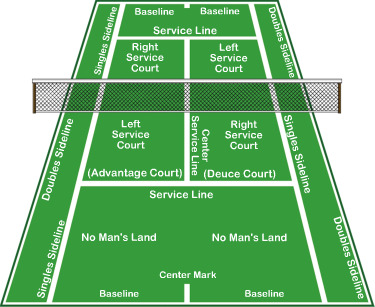Rules, Regulations
Call us +65-8368-7277 or fill in the Form~we will help you arrange a Tennis coach
The organization that serves as the official governing body for tennis is the International Tennis Federation (ITF). The rules, regulations and scoring are all set by ITF and are used worldwide. These rules and regulations include the standardization of equipments and courts, as well as the certification of tennis umpires and/or officials.
I. Rules and Regulations
A. Right to Serve
There are two methods used to decide whether which of the opposing players will have the right to serve. One is a simple coin toss, and another method is racquet spin. The winner of the toss or the spin will have the right to choose if he will be the one to serve or receive the ball upon the start of the game.
B. Position
Player A stands in one side of the court, and his opponent Player B stands on the other side. Let’s say player A is the one to put the ball in play; he is then called the server. Player B is the receiver.
C. Service
A tennis match starts with the server executing a tennis serve behind the baseline, otherwise called as the “deuce court.” The deuce court is on the right hand side of the center hash. He must serve within the boundaries of the court (singles or doubles, depending on the type of play). The ball must be served only when the receiver is ready.
There are two kinds of points: even-numbered points are achieved by serving from the deuce court, while odd-numbered points are played from what we call “advantage court”. The advantage court is located on the left side of the center hash. The ball served from the deuce court should land in the opponent’s deuce court (service box); while the ball served from the advantage court should land on the opponent’s advantage court (service box).
A “let” is called when the ball hits the net and lands into the correct service box. Let causes another serve to be given to the serve.
A server loses the point if he is unable to hit to ball into the correct service box of his opponent twice. A “foot fault” happens when the server steps on the baseline just before hitting the ball.
D. Receiving
When receiving the ball, the receiver can stand anywhere on the court. He is deemed ready to receive if he has done any attempt to return the serve of his opponent. The ball must bounce in the service box first before he attempts to hit it and return the serve. The point goes to the server if the receiver hits the ball before the ball bounces.
II. Scoring
In tennis scoring, “love” means zero points. The first point is scored as “15”, the second is “30” and the third is “40”. If player A wins the first point, the score is 15-0, but the chair umpire should say “15-Love”. For example, if the score is “40-15” with player A on the lead, player A wins if he makes the next point.
However, if the score is “40-40” or “40-All”, the score is termed “deuce”. One of the players must win two consecutive points for him to win the game. If the server makes the first point after a deuce, he is in Advantage –In or “Ad-in”, which means he needs to win the next point in order to win the game. The term is changed to Advantage – Out or “Ad-out” if the receiver is the one who wins the first of the two points needed to win over the deuce. If the server wins the point after a deuce, but loses the second point needed to win the game, the advantage is lost, and the score goes back to “40-40” or deuce.



